Occupational therapist and professor, Olalla Sáiz Vázquez, and her students Marta Rupérez, Ainhoa Unzúe, Irene Urquía and Irene Urquijo explain how to create a language session for people with mild cognitive impairment through NeuronUP intervention.
Justification
The group targeted by the intervention consists of people without cognitive impairment and people with mild cognitive impairment (MCI).
For the design of the session, the NeuronUP platform was used, from which all the activities were taken, selecting those most appropriate for the users so they can achieve the objectives set.
The cognitive function to be stimulated with this intervention is language. In addition, by carrying out each and every activity, immediate memory and sustained attention will also be stimulated.
Once the professional performs an initial assessment, either by collecting information from other professionals or carried out by themself, they will be able to identify individual and group needs to establish objectives. Then, they will design an intervention plan, which they will subsequently implement as detailed below. After completing the intervention, the professional will carry out a final assessment to verify the achievement of the objectives, as well as its effectiveness.
Objectives of the language session for people with mild cognitive impairment
General objective
The general objective of conducting the cognitive session is to stimulate language and maximize the preserved linguistic abilities of the users.
Specific objectives
The specific objectives of this language session are:
- Promote verbal fluency.
- Promote place orientation.
- Facilitate number recognition and comprehension.
- Facilitate reading and writing comprehension.
- Enhance spatial relations.
- Stimulate short-term memory.
Scheduled activities
Below we will explain the NeuronUP activities selected to carry out the language session for people with mild cognitive impairment.
1. Matching Nouns to Images
What does it involve?
Match each noun to the image that represents it.
What does this activity target?
- Exercise reading and writing comprehension.
- Promote verbal fluency.
- Practice oral comprehension.
- Promote object recognition.
- Practice vocabulary.
- Maintain anterograde and semantic memory through reminiscence using everyday objects.
- Preserve immediate memory.
- Promote place orientation.
Duration
10 minutes, including explanation of the activity and closure.
Description
- To carry out this activity, users should be positioned together and seated facing the screen on which the projector image is displayed. They will be provided with sheets of paper and pens.
- The professional must open NeuronUP on the computer and select the activity “Match nouns to images”.
- The level with images on the theme that best suits the group will be selected; in our case we chose advanced-level cards, which feature everyday and older objects, in order to encourage reminiscence.
- After preparing the material, the activity to be carried out will be explained; in it, only the NeuronUP images will appear and the professional will be the one to say the words aloud.
- Each image will be assigned a number and users must write the number of the image they believe it is when the therapist says the word.
- Every six images, they will be reviewed aloud, alternating turns so that all users participate.
Play by levels
There are five levels. In the easier levels it will be simpler, as there will be fewer images to match with their nouns and the words will be easier, whereas in the more advanced levels there will be a larger number of words and they will be more difficult.
Format
It is available in both digital and paper formats.
Children’s version
This game has the children’s version What’s its name?.
Languages
This worksheet is available in Spanish, English, French, Portuguese and Catalan.
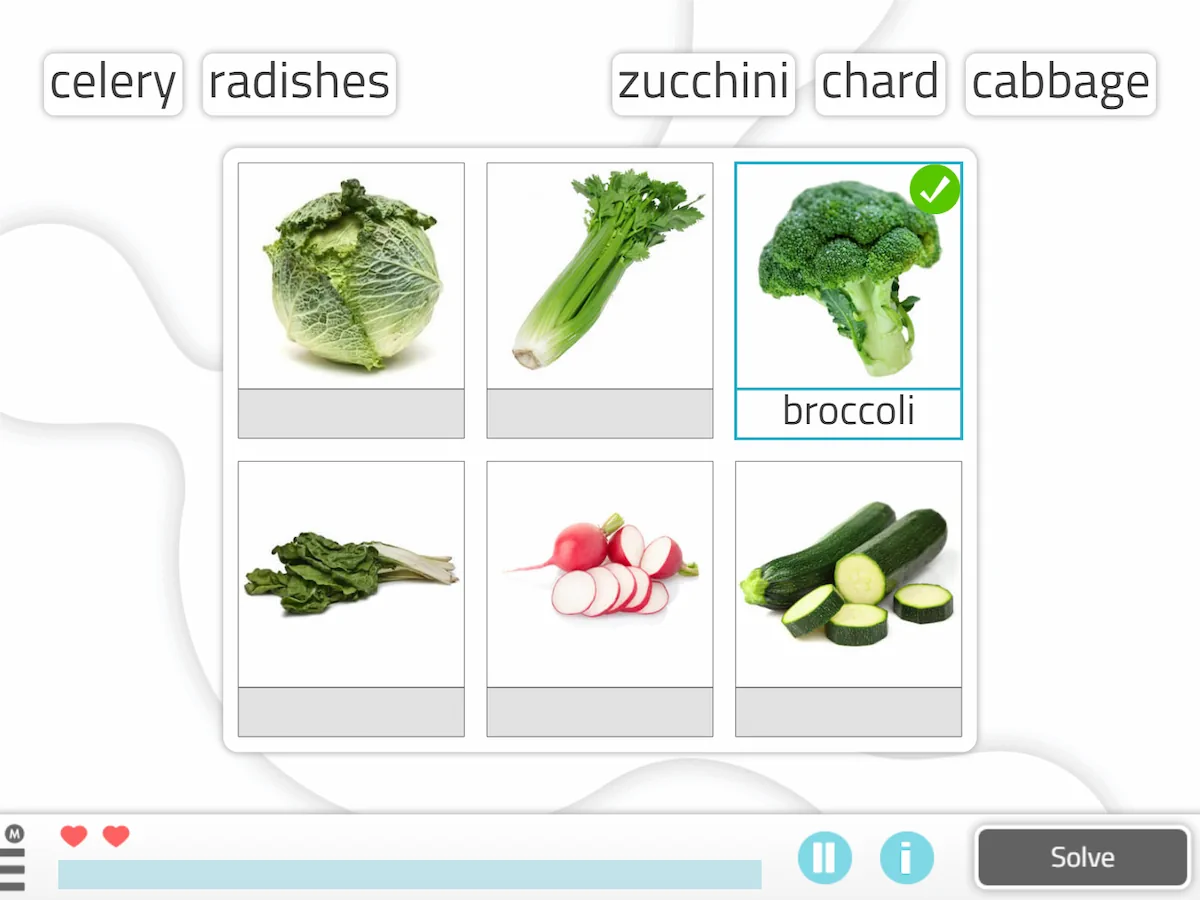
2. Task sequencing (text-only)
What does it involve?
Put in order the different steps needed to carry out an activity (written content).
What does this activity target?
- Improve planning.
- Promote reasoning.
- Stimulate the mechanics of reading and writing.
- Exercise fine motor skills of the hand.
- Optimize number recognition and comprehension.
Duration
10 minutes, including explanation of the activity and closure.
Description
- For this activity, users should be seated in chairs at tables, with blank sheets and a pen each (material provided by the occupational therapist).
- The professional will open NeuronUP on the computer and select the activity “Order activity steps”.
- Once the activity is open, the desired configuration will be selected; in this case it will be free mode and medium-advanced levels.
- After carrying out these steps, the explanation of the activity will continue, because, although the program already gives a brief indication, the therapist, in order to avoid possible confusion, will reinforce the clarification.
- Next, the professional will project the sheets they want users to complete, so that individually they must place on the sheet, as they deem appropriate, the order of the different steps of the corresponding task.
- Given that there are sheets that contain many steps, to avoid boredom and fatigue of the users, it should be clarified that each step will be accompanied by a letter, starting with A. In this way, instead of having to write all the steps, it is enough for them to place the letter on the sheet (corresponding to a step of the activity) and next to it, the order number they believe corresponds to that letter.
- Once all users have finished ordering the activity, a volunteer will be asked to read it aloud. In this way, the rest of the users will see whether or not the answer matches what they wrote, and if they notice any error, they will correct each other, promoting interaction.
Format
It is available in both digital and paper formats.
Children’s version
This game has the children’s version Step by Step (Text-Only).
Languages
This worksheet is available in Spanish, English and Portuguese.
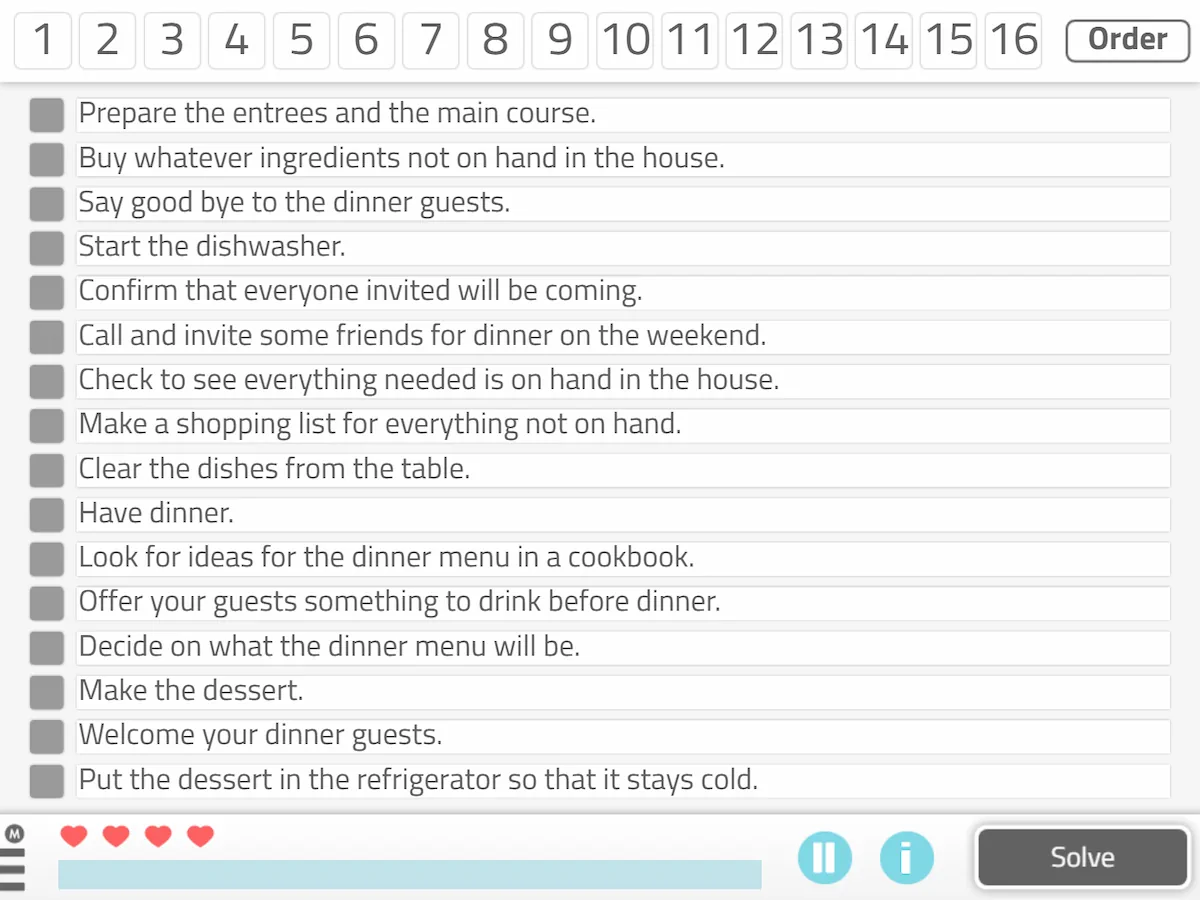
3. Set the clock (numbers)
What does it involve?
Place the hands so that the clock shows the indicated time (numerical instructions).
What does this activity target?
- Facilitate number recognition and comprehension.
- Facilitate reading and writing comprehension.
- Enhance spatial relations.
Duration
10 minutes, including explanation of the activity and closure.
Description
- For this activity users should be seated in chairs at tables, oriented towards the projector screen. Each user will be given a worksheet showing empty clock faces and a pen. The material will be provided by the occupational therapist.
- The professional will open the NeuronUP program on the computer and select the activity “Set the clock”.
- The difficulty of the activity will progressively increase.
- No maximum time or inactivity warnings will be set, since we therapists will manage the time according to the needs of each user.
- After explaining the activity to all users, it will begin. A numerical time will appear on the projector screen; users must try to represent that time on an empty clock face on their worksheet by drawing the clock hands and placing them correctly.
- Once the therapists deem the time over, we will ask for a volunteer to come to the screen to try to place the clock hands correctly. It will be corrected as a group and, if any user has difficulties, we will try to help and resolve them.
- Once each exercise has been corrected, the next one will be started.
Languages
This worksheet is available in Spanish, English, French, Portuguese and Catalan.
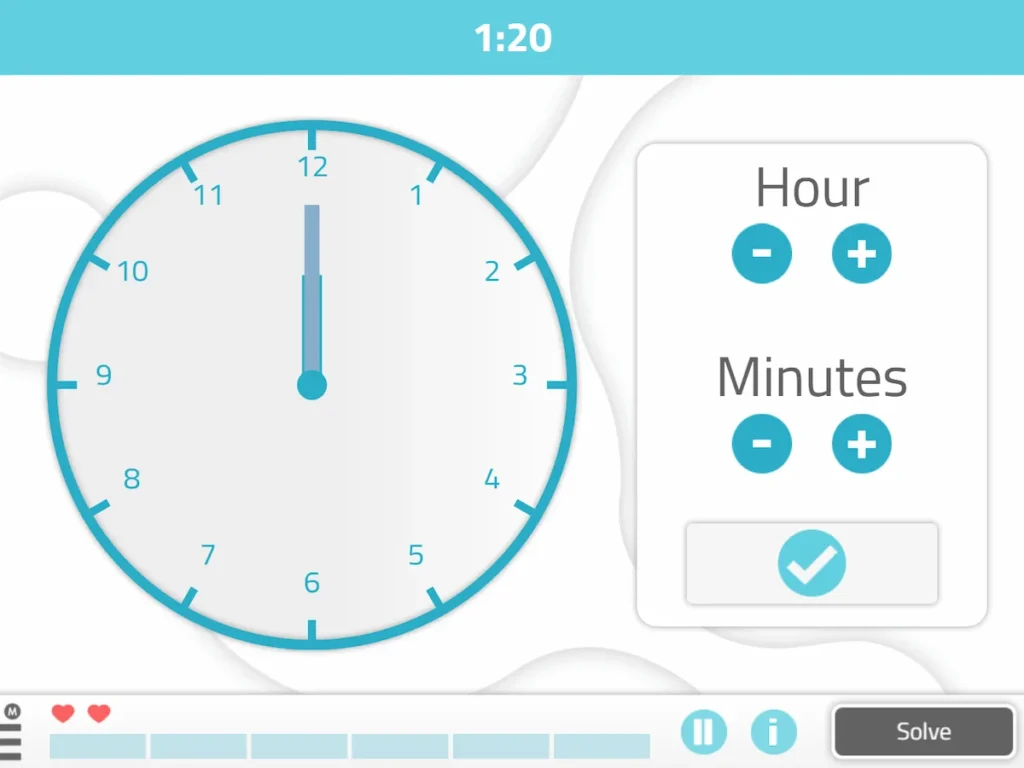
4. Making Words
What does it involve?
This game consists of forming words by arranging fragments, syllables or individual letters.
Duration
15 minutes, including explanation of the activity and closure.
What does this activity target?
- Enhance repetition ability.
- Promote letter recognition and association.
- Promote ideation.
- Enhance spatial relations and hemispatial neglect.
- Reinforce focused attention.
- Stimulate short-term memory.
Description
- To carry out this activity, users will be seated at tables with a sheet of paper and a pen each.
- The occupational therapist will open NeuronUP on the computer and select the activity “Making Words”.
- Once the activity is accessed, a customized phase will be configured where the following settings will be established. The general aspects will include a number of screens set to 15, so that if any of the words is too difficult, another can be generated, while maintaining the total of 15 words we want to get right. On the other hand, no maximum time or inactivity warning will be set, since we ourselves will control the activity and the time devoted to it. The parameters will be 6 bubbles and will contain letters, with one letter in each bubble.
- The mechanics of the activity will consist of projecting a screen with the bubbles that contain the letters, and users must form a word with all the letters that appear in the bubbles. The first user who forms the word will say it aloud, and the occupational therapist will select the letters in The Correct Order on the computer, so that all users can see the word. Users will be asked to memorize all the words they got correct.
- After having guessed 5 words, users will be asked to form a sentence with one of the 5 previously guessed words and write it on the sheet that each of them has. If any of them remember several words, they can combine them in the same sentence, or write several sentences with the different words they recall.
- Once each of them has written a sentence, each user will read it aloud.
- After this reading, the activity will resume until another 5 words are guessed. At that time it will be stopped again to create the sentence. This procedure will be carried out one last time, so that at the end of the activity, a total of 15 words have been guessed and a minimum of 3 sentences written per user.
Play by levels
It is organized into three difficulty levels: easy, medium and hard, and some general aspects and parameters can be customized to adjust it to each user’s needs.
Languages and format
Making Words can be used in digital format in Spanish, English and Portuguese.
Children’s version
This game has a children’s version Word Scramble.

Conclusions of the language session for people with mild cognitive impairment
Language was chosen for this session because it is considered one of the cognitive functions of greatest importance for the proper development of daily living and of the rest of the occupational areas of all people.
It is considered that in older adults, language function is an area that progressively deteriorates, and that is why the main objective of the scheduled cognitive session is to work on language. In addition, working on this function is especially important in people with mild cognitive impairment, since it is one of the first functions to decline.
The selection of NeuronUP activities was based on covering all processes encompassed by language, including expression, comprehension, fluency, writing and reading; in addition to working transversally on other cognitive functions.
Possible difficulties
The difficulties that are believed may arise during the cognitive session include low participation from users, as well as, on the other hand, users participating simultaneously, leading to conflicts or confrontations. In addition, users may become frustrated if they are unable to perform the activities or if they make numerous mistakes. Also, the scheduled time for each activity may be insufficient. Another aspect to take into account is technology, since the internet or even the computer may fail.
To try to avoid these problems, the first thing carried out is an organization of the order of activities, so that the session will start with an easy activity, increasing the level of difficulty in the others, and ending again with another easy activity to increase users’ motivation and personal satisfaction. If we encounter a situation of low participation, users will be selected to perform the activity or the correction. If, on the contrary, there is excessive participation, speaking turns will be established and any conflicts that may arise will be mediated.
If the activities last longer than scheduled, an activity will be removed from the session, since the important thing is to work on language, not the number of activities performed.
To solve technological problems, if any, the room will be checked 10 – 15 minutes before the session to ensure everything works correctly, and if there are failures whiteboards and paper will be used to carry out the activities.
Final evaluation
As a final evaluation regarding this practice, it was considered very enriching, since it allowed designing a cognitive session for a group of users collectively, something necessary in occupational therapy to intervene in different settings or with different groups.
It was also considered very interesting, as it allowed a first contact with the NeuronUP application, a platform truly useful for any professional in the field of occupational therapy, as well as beneficial for all users who make use of it.
Bibliography
- NeuronUP [Internet]. Neuronup.com. [accessed November 13, 2018]. Available at: https://www.neuronup.com/es/plataforma-rehabilitacion-cognitiva
- Ávila Álvarez A, Martínez Piédrola R, Matilla Mora R, Máximo Bocanegra M, Méndez Méndez B, Talavera Valverde MA et al. Framework for Occupational Therapy Practice: Domain and Process. 2nd Edition [Translation]. terapia-ocupacional.com [online portal]. 2010 [-date of consultation-]; [85p.]. Available at: http://www.terapia-ocupacional.com/aota2010esp.pdf Translated from: American Occupational Therapy Association (2008). Occupational therapy practice framework: Domain and process (2nd ed.).
Authors
Olalla Saiz Vazquez, Associate Professor at the University of Burgos and her students Gloria Álvarez, Yasmina Bécares, Rosa Cruz and Álvaro García.
If you liked this article that explains how to create a language session for people with mild cognitive impairment, you might also be interested in these other articles:
“This article has been translated. Link to the original article in Spanish:”
Sesión de lenguaje para personas con deterioro cognitivo leve
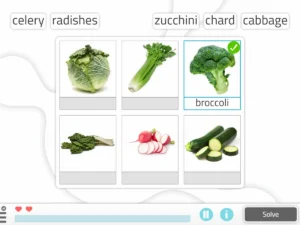
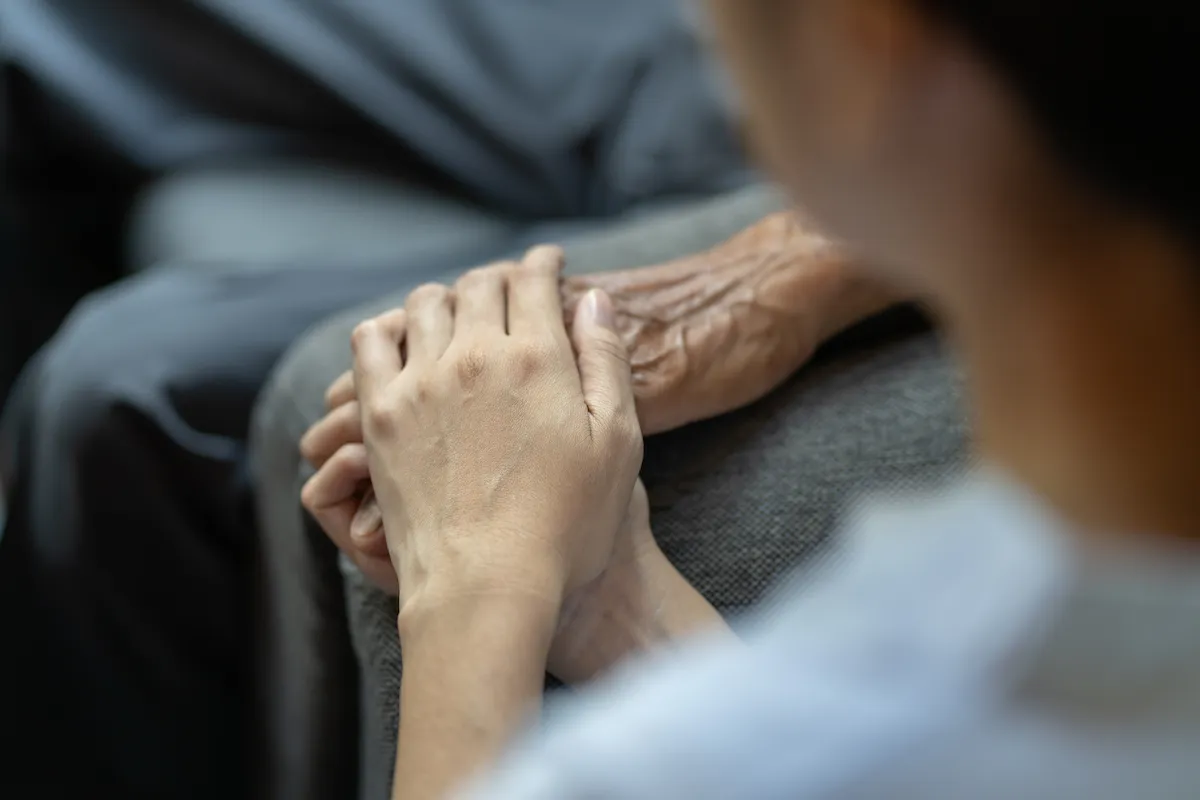

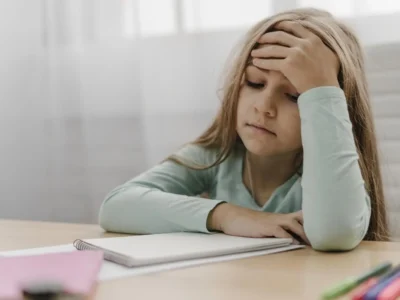

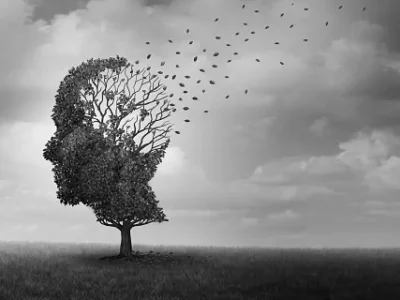

 What cognitive functions are involved when playing Pac-Man?
What cognitive functions are involved when playing Pac-Man?
Leave a Reply